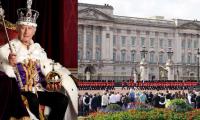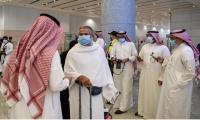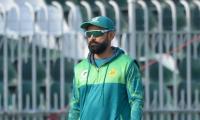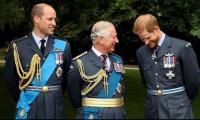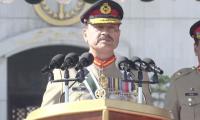The second plank of Nawaz Sharif’s vision has always been the economy, and he hasn’t been bad for the traders and the industrialists. The economy has, during his tenures, always seemed on the verge of taking off – never taking off in actuality. And this needs investigation. The inadequacy may lie in Nawaz’s conception of the economy which has mostly never been beyond building roads.
In his most recent stint beginning 2013 there have been other determinants which have held the economy back, like the ongoing war against terror and a perpetual air of fear scaring investment away, as well as a problematic internal environment that has tended to be chaotic – never engendering confidence in investors. Without growth in the economy, jobs remain flat. But Nawaz, more than anyone else, has been Pakistan’s best bet to move the economy forward; such is the lack of economic intellect all across the political landscape.
A chronological review is needed to ascertain where he missed his chances. Pursuing Musharraf, against advice and on external bidding, he lost precious political capital. That also brought institutions into a confrontation – unnecessarily – forcing him away from his core objectives of finding peace in the neighbourhood and at home to spur economic growth.
What may have soon become apparent to his government in 2013 would have been the shocking state of the macro-indicators – low reserves, high inflation, subsistent economy (barely), negative on net growth, and a crumbling infrastructure, which actually meant no energy or electricity to power the industry. The government was huge (still is) and the expenditure spiralling beyond control. To sustain this structure and to repay earlier debt –that being the only source of keeping afloat – more debt was their only option. And it has truly multiplied during this period. The textile and garment industry was fleeing by then because of the poor energy conditions where plants would not run; this exodus too had to be stopped.
More debt could have been avoided to keep afloat through major governmental restructuring but it entailed a political cost. And Nawaz had already committed his political capital in trivial pursuits. More debt thus ran the system, and that is how we have kept afloat. That it impinges a cost on sovereignty is pretty obvious. The growth and the jobs, however, could only come with additional investments. With private investment nonexistent, Nawaz could only go to some benevolent brothers for the favour.
However, it was soon Imran Khan’s time and he got the PM and the government’s attention for the next 126 days beginning August 2014. A year gone already in the tenure, the sit-in only added to the civ-mil tenuousness. To many, IK’s sit-in may have been an extension of the same incongruity but time was lost on the trot as the Nawaz government fiddled with whether IK would succeed in forcing Nawaz out. Till of course APS happened; except that now Nawaz was pushed to lead a war that he had not planned, inalterably forcing a change in his agenda of governance and priorities. The economy was reduced to being a distant second.
Not that these guys didn’t work on finding investment. They knew the country had no money to invest; it was barely surviving on loans and retiring inherited debt. Two things began to take shape in the last two years of this government: the real-estate sector eating most private money was plugged through a series of actions amounting to regulation and stringent taxation hoping to free some money into other sectors, while friends were scouted for some investment they could help with.
China, the Gulf countries and Turkey were approached. Qatar closed some deals on LNG freed from the American and European markets, while Turkey could only sell some of its mass transit ideas and equipment and brought in some investment in an even quid pro quo. The Saudis have only coveted Pakistan’s military, some land for agriculture if it ever became available, and manpower which has sustained Saudi economy in low-end unskilled jobs.
China’s One-Belt One-Road, however, did detect an opportunity for itself, and over a sustained period of engagement finally drew a blueprint of bringing in hefty project-based investments feeding into the larger OBOR plan of China. As a consequence, over $50 billion will get them a direct route from the Arabian Sea to Kashgar, reducing the distance and the cost of moving goods by half while also investing in electrical power plants and making up for serious shortfalls in Pakistan’s economy.
So far, so good. This has the potential to be a real game-changer if indeed it gets put through all its paces. But questions linger. Were these the right quarters of the economy to invest in, especially when most of the 50 plus billions that Pakistan has acquired will be loans and will need to be returned at a significant mark-up? There is also criticism for focusing on roads only, though it can in the long run provide connectivity within and outside of borders enhancing trade and integration. If attained, it would surely spur growth, enhance security and integrate the region giving it much needed strategic stability.
The power projects were perhaps a compulsion as Pakistan counts among the most electricity scarce nations. But the tariff, the terms of the contract, and the fact that these are mostly a generation old coal-based plants that China has conveniently palmed off – while it eliminates its own inefficient carbon spewing coal-based power plants – is a major rub. For a nation which had absolutely no fat to play with, an injection of fifty billions is huge – except that it is coming at a cost we just haven’t factored in. Beyond the accumulated debt – by some count reaching around 80 percent of GDP – attendant deterioration in the environment with coal-based plants will only mean that the long-term costs to the economy and society will be high.
China will surely benefit, and hugely by all counts; Pakistan on the other hand may end up feeling sore in due course because of the raw deal that it may have been forced to accept with little else as an option.
In terms of enablers, the road network and the energy infrastructure are pretty potent elements to finally promote a vibrant economy. But expensive electricity and expensive loans just might countervail the advantage. Or was it because beggars can’t be choosers?
Yet a very smart economic and political tapestry woven as one will alone get the country the benefits that lie in CPEC. This will also need suitable changes to the paradigm of engagement within the region, especially with the neighbours. For this, the politics and the military ‘have’ to be on the same page in real terms. Otherwise, we are losers all the way. For the four years and five budgets that PML-N has presented, there is little to show that such sensitivity and intellectual capital to work towards gains and growth exists. More vision wasted.
This is Part II of the previous article by the writer (‘A vision wasted, June 7).
Email: shhzdchdhry@yahoo.com
People stand in line up as election officials check their ballot papers during voting general election at a polling...
Women show their voter identity cards as they stand in a queue before casting their votes in Agartala. — PTIThe 18th...
Former prime minister Imran Khan. — Instagram/ imrankhan.ptiAn old saying has it that “when you dance with the...
Kashmiris in Indian illegally occupied Kashmir protesting against the Indian occupation as the forces of India looked...
A representational image showing residents walking at a wholesale market in Karachi. — AFP/FileOnce again there is...
A representational image showing late Pakistani human rights activist and Supreme Court lawyer Asma Jahangir. —...

